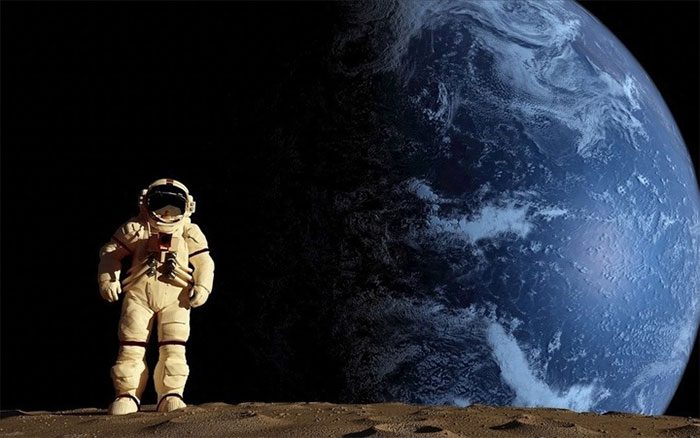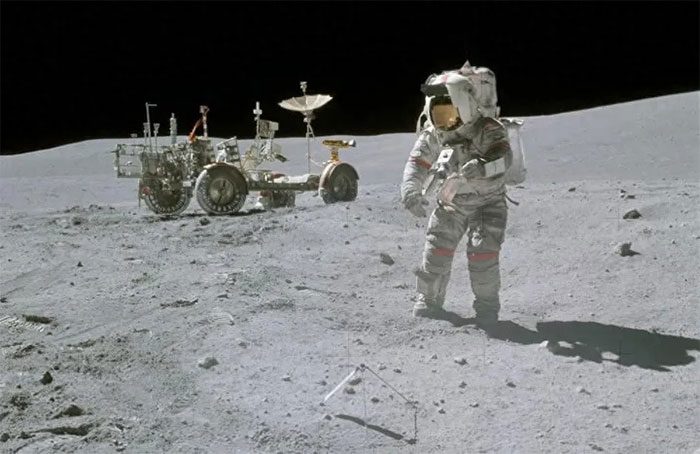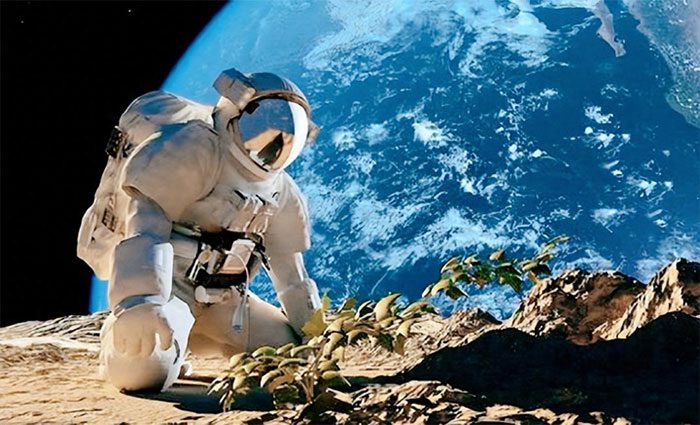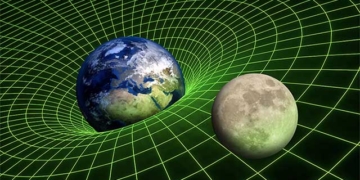When astronauts set foot on the Moon, they realized a shocking truth: during their day exploring that strange world, many days had passed on Earth! This astonishing phenomenon quickly sparked a global debate.
Space exploration has always been one of humanity’s greatest dreams. In the realm of space exploration, landing on the Moon is undoubtedly one of the most significant and challenging missions. So, what is a day like for astronauts on the Moon? Located 360 million kilometers from Earth, time on the Moon is vastly different from what we are accustomed to on Earth.

One of the greatest scientific discoveries in human history was the first human landing on the Moon. On July 21, 1969, astronaut Neil Armstrong became the first person to walk on the Moon. Since that day, human exploration of the Moon has never ceased, and scientists have begun to conduct in-depth studies of a day on the Moon. (Image: ZME).
A day on Earth consists of 24 hours, while a day on the Moon is approximately 29 Earth days long. In other words, while Earth completes one rotation every 24 hours, the Moon experiences a sunrise approximately every 709 hours. This means that an astronaut’s day on the Moon is much longer than a day on Earth, which is a fascinating phenomenon.
When astronauts wake up, they find themselves in a very unique environment. The surface of the Moon is extremely hot, lacking an atmosphere and humidity, with only vast craters and a grayish-white lunar surface visible. The first task is to check equipment and communicate with the control center on Earth. Astronauts must ensure that the various systems of the lunar base are functioning normally to ensure smooth progress.
An astronaut’s day on the Moon is not just about research, experiments, and data collection. They are also required to perform tasks such as equipment maintenance, sample collection, and recovery operations. Moving and working is relatively easier due to the lower gravity, but astronauts still need to approach each task carefully, as precision and attention to detail are key to success.

Scientists have conducted in-depth studies of a day on the Moon and used this time zone difference to gain a better understanding of the Moon’s properties. For example, by studying solar radiation and temperature fluctuations around the Moon, scientists can infer the physical characteristics and chemical composition of the lunar surface. Additionally, they can investigate the Moon’s internal structure and the movement of its crust by observing lunar earthquakes. (Image: Allthatsinteresting).
Since the lunar surface lacks an atmosphere, astronauts must spend the entire day in spacesuits. These suits provide air, maintain body temperature, protect astronauts from radiation, and shield them from the external environment. While wearing their space suits, astronauts can step outside the lunar base to conduct surveys and explorations. They can bring along some scientific tools and conduct various experiments to further uncover the Moon’s mysteries.
On the Moon, day and night alternate, and this cycle differs from the 24-hour day-night pattern on Earth. Astronauts need to ensure they can complete their missions within each cycle and adapt to the darkness and freezing temperatures of the Moon at night.
As the day comes to an end, astronauts must return to the lunar base to communicate and report back to their colleagues on Earth. They will review the results and challenges of the day and prepare for the next day’s missions. In the lunar base, communication with the control center on Earth is crucial, ensuring close contact with Earth so that any issues can be addressed promptly.

Understanding a day on the Moon is not only beneficial for scientific research but also holds significant importance for future space exploration programs. For example, as humans plan to establish a permanent base on the Moon, they need to consider the time zone differences there. They must adjust their schedules to align with a day on the Moon. This is crucial for astronauts who will live and work on the Moon for extended periods. (Image: Sciencealert).
During their missions, astronauts must always be mindful of the passing time. Even though there is no day-night cycle on Earth, astronauts need to maintain a high level of self-discipline and time management according to mission requirements and schedules. Since travel on the Moon is relatively slow and restricted, they must arrange their working time efficiently to avoid fatigue and wasted time.
Although an astronaut’s day on the Moon is very different from a day on Earth, the work they do and their exploration goals remain the same. By studying the Moon, we can gain a better understanding of space and provide additional information and support for future space exploration. Every day astronauts spend on the Moon is an opportunity for adventure and discovery, as well as humanity’s pursuit of the limitless possibilities of space.

Astronauts are among the most challenging and mysterious professions in the world. Humans have always been interested and curious about astronauts living on the Moon. (Image: Zhihu).
An astronaut’s day on the Moon is filled with scientific missions, challenges, and wonders. Although they lack the ability to perceive time as on Earth, they can still accomplish their tasks effectively thanks to their strong self-discipline and time management skills. Through their efforts, we can learn more about the Moon and explore the mysteries of the universe.




















































